We knew we were in for an active start to NFL free agency, but it has been even more exciting than I anticipated -- and it likely isn't done surprising us yet. Add in some interesting pro days, and the picture of how the events of this spring will shape the 2021 regular season is starting to come into focus.
That said, it seems like the right time to fire up my next mock with just under a month to go before the 2021 NFL Draft. And remember, my analytics-based mock is based solely on a contextual, data-driven model that aims to do one thing: maximize each team's potential to win as many games as possible in 2021, and only trades that have actually occurred are included. So, before you read any further, take note:
I am NOT attempting to predict or divine what teams will ACTUALLY DO on draft day.
For this particular file, the model considered current rosters, the market of remaining free agents and 2021 draft prospects.
For a full explanation of how I execute my mock draft, check out the bottom of this file.
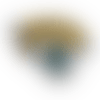

No change here from my first mock, but how about an advanced nugget? Lawrence's résumé includes being asked to throw a lot of quick passes (like screens). In terms of getting his feet and hips set quickly in order to execute these passes, he ranks in the top two percent of my eight-season sample (percentage of quick passes where a QB's base was set in 1.5 seconds or less). This is important because quarterbacks who demonstrated stable bases in the sample translated to the NFL on quick passes at a faster rate than those who were not able to get set quickly. It took almost two full games for those who fell in the top five percent. This suggests Lawrence should be able to execute quick passes with a shorter learning curve (i.e., be more productive early on as a pro).


Same general offensive line theme as my first mock, where I matched the Jets with Penei Sewell as a presumable right tackle. This time, my model gives a slight edge to Slater due to his versatility to play guard or tackle and be multiple right out the gate. The Jets have not addressed their very needy O-line this offseason beyond adding C Dan Feeney. This pick at No. 2 also reflects the positive addition of RB Tevin Coleman, whose scheme familiarity with new Jets OC Mike LaFleur means the spaces Slater could clear would hold even more value.
Here's my strategy note: It's logical to assume that the Niners have some idea of what the Jets are up to and vice-versa, especially given the number of San Francisco coaches who just relocated to Florham Park. It's not anything unfair or unusual -- it would have been smart of the Dolphins to presumably leverage this in their trade haul for No. 3 -- but this does strongly point to QB as the position selected here, and BYU's Zach Wilson is the strongest rumored selection. That said, the general point of this mock is to maximize each team's potential to win as many games as possible in 2021. My model gives Sam Darnold a 4.25 win share as the Jets' 2021 starter, while Wilson adds 3.93 wins.
And hey, we're in the thick of mock draft season. You've all seen a million first-round projections with Wilson going to the Jets. So ... what if they actually stick with Darnold and go another route? An approach, I might add, that no one has conclusively ruled out. How would that impact Round 1 as a whole? This is a useful thought exercise!

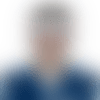
The 49ers traded up nine spots -- giving up two additional first-rounders and a third -- to target one position and one position only: quarterback. They're not even trying to hide it at this point, with head coach Kyle Shanahan admitting that the Niners feared being "left at the altar" in the QB derby if they had stayed in their original draft slot. Exploring a draft pick at any other position in this blurb would just seem like a pointless pursuit at this point. So, which QB would San Francisco take if Trevor Lawrence were the only one off the board?
My model takes into account each team's current status: roster makeup, opponents, scheme, etc. And with Wilson's ability in play-action matching well with Shanahan's system, the model gives him a 4.27 win share. Alabama QB Mac Jones, whose name keeps cropping up around the Niners, would add 3.77 wins.

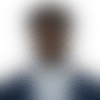
Paye remains the optimal pick for Atlanta, but the gap between the next-best selection has narrowed. Drafting cornerback Patrick Surtain II to pair with last season's first-rounder, A.J. Terrell, is the Falcons' second-best option.
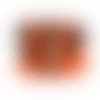
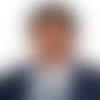
Who's most likely the biggest fan of my mock? Joe Burrow.


A good strategy note based on the Fins' recent trades: selecting just three slots lower generates a huge return. Sure, it may tip their hand that quarterback is not a focus in this draft, but it provides a ton of flexibility. Just to add context, let's do the trade-chart math: If you use the Jimmy Johnson chart, which is basically the gold standard, the third overall pick is worth 2,200 points, while the sixth is 1,600. So the difference is 600. Guess which pick is valued at 600? Pick 31 (second-to-last in Round 1). Mr. Grier, if you're reading this (and I hope you are, because that would be really cool), well done.
One last note: The difference between adding Ja'Marr Chase or Kyle Pitts is very slight.

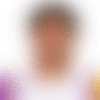
Should the Dolphins select Chase at No. 6, the next-best pick to increase the Lions' 2021 win total is linebacker Micah Parsons.

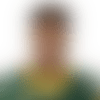
Christian McCaffrey's skill set has a big impact on helping shorten Lance's learning curve.
That said, I love a good hypothetical moment, so let's play with the model in a world with trades. The Panthers could shake things up league-wide. Let's say a QB like Jimmy Garoppolo or even Sam Darnold were to come available at a reasonable enough (or even favorable) cost, and the Panthers were to go that route. If they don't end up needing a QB on draft day, they'd match up with a corner here -- and they could also leverage another team's desire to snag a QB prospect in the first round into a nice gain. In other words, Carolina doesn't have to acquire an elite-level QB to drive a big change in their potential.

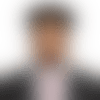
Same pick here as last time. Denver is in an interesting spot, with the opportunity to trade up or down, depending on the strategy at the QB position. If the team wants to add a first-round QB, Fields is a fit, but a prospect who forecasts to be in the range of a late-first or early second-round pick (that is, in the trade-down range) and who really pops for the Broncos is Michigan tackle Jalen Mayfield, who would slot in on the right side of the offensive line. Personally, I would also love to see what coach Vic Fangio would do with linebacker Zaven Collins, who also projects in that same trade-down range. Given Fangio's teaching ability, Collins' ability to limit both catches and yards after the catch when in coverage projects at a rate that is in the top 15 percent of the 15-season sample.

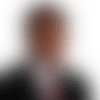
Projected press production on third downs drives this pick, which looks like one of the best fits for any selection in this first round. According to my model, Surtain is the corner with the highest ceiling.

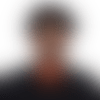
Versatility of alignment, along with big-time upside, drives this. In my previous mock, I had Rousseau going to the Cowboys at No. 10 overall, but now he actually projects to most likely be drafted in the 20s, meaning this could be a prime situation for the G-Men to consider a trade down, especially with Alijah Vera-Tucker, whom I forecast at guard, also potentially falling to that range. With the possibility that these two high-value-add options could still be available, moving down to add draft capital might be a smart risk.


In my draft forecast model, which is what I use to determine the likelihood of a prospect being available at a position when trades are possible, Smith and his Alabama teammate, Jaylen Waddle, have intersecting volatility bubbles -- which just means they are closely rated, and there are solid reason for each to be chosen ahead or behind the other. Smith is a more precise route runner, which drives him being slightly more valuable in my models. (Teams use this type of thing to help see how proposed trades impact player availability; the draft forecast model produces a percent likelihood.)

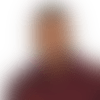
Second-happiest person to read my mock draft? Justin Herbert.

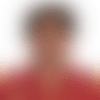
This is the same selection for the Vikings that I had in 1.0, but now Vera-Tucker looks like an even stronger fit with Minnesota, given Kyle Rudolph's exit and very few offensive adds. Unclear whether Kirk Cousins or Dalvin Cook will be happier with this one.

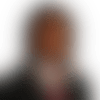
Remember, this is a mock focused on maximizing wins next season, and Cam Newton has a lot of value.


Adding Horn to the net impact of free-agent signings CB Malcolm Butler and DE J.J. Watt is a big gut punch to opposing passing games.

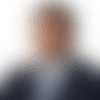
Parsons is listed as a linebacker in the program, but defending the slot in coverage is one of his strengths that forecasts to pay immediate dividends. The Raiders would be well-served to address the interior of their O-line in Round 2.

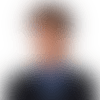
His burst from the line of scrimmage to 5 yards traveled after the snap was third-best in the FBS last season, and the Dolphins' front had the fourth-slowest burst in the league.


Another trade target is Ron Rivera's squad. Left tackle is the optimal selection, and the level of competition Jenkins faced in college helps drive his quick adoption of the NFL playbook (on either side of the line).

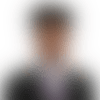
With Kyle Fuller's departure in free agency, the Bears need to reinforce the back end of the defense. Newsome's floor is very high -- and on this team, with this front, he'll be impactful in 2021, with his quick learning curve.

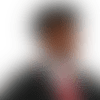
The need of a pass rush drives the pick value here, but wide receiver also pops.


The Titans added Josh Reynolds after losing Corey Davis and Jonnu Smith in free agency, but my model's pass-catching quotient fuels the selection of this versatile wideout.

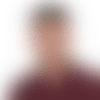
The Jets still take a cornerback here. Farley's recent injury news -- though the expectation is that he'll be cleared for full activities before the start of training camp -- dropped him from the best CB in my model to the fourth-best. The Jets' upside of this pick has gone nowhere, though.

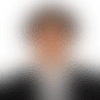
Even with a lot of replenishing defensive pieces available -- and no certainty at the running back position -- my model strongly suggests taking the right tackle.

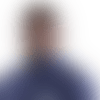
This pick stays the same, though my model also likes TCU safety Trevon Moehrig here.

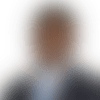
I love what the Browns have done so far this offseason. To be honest, we aren't talking about it enough. Inserting Davis into the middle of the defense is a potentially huge upside add.

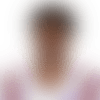
Even with the addition of Sammy Watkins in free agency, this move optimizes offensive gains.
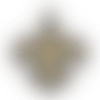


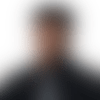
The Packers have been relatively stagnant in terms of offseason activity, increasing the questions and uncertainty they're facing, but adding Moore would help boost the pass-catching potential.

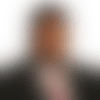
This would be a -- quite literally -- huge get for Buffalo. When considering the current DT market, this pairing drives a ton of value.

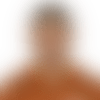
One thing seems to be clear: Andy Reid wants to restructure his offensive line.

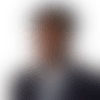
Oweh's speed and versatility land him in Tampa, and the growth potential under defensive coordinator Todd Bowles proves this to be an insanely good fit.
Explaining my mock draft process
I use my draft prospect model, explained at the top of this article, to create a numerical value for each player. These ratings can be compared across years. Then I use my NFL model, which considers the market of potential free agents at each position, to create projected win-contribution metrics by player, position group and side of the ball. These get added up to predict win totals for the season. (Here's an example of these metrics for WRs.) The results quantify strengths and weaknesses of current NFL rosters. My model also factors in as many known elements of coaching philosophies (of the current staffs) as possible, and each team's 2021 opponents. Then, my model "selects" the draft prospect that would yield the highest win total for each team in the coming season.
Here's the part that's extra: I have projections and results for all teams and the draft prospects they selected over the past 15 seasons. I examine each season's on-field results, objectively analyzing what happened while identifying the trends and strategies that led to success or failure. I also ask coaches, front office executives and even players to help me understand why results occurred. These subjective inputs help shape the results, meaning the model gets "smarter" each season.
There are a lot of real-life efficiencies that could be realized via draft-pick trades. I can't help but to note them in certain cases. Still, for the sake of this particular mock, I did not allow for trades. If I worked for an individual team, an analysis like this could aid in creating a strategy for identifying potential trade partners, as well as vulnerable spots where other teams are most likely to scoop up particular players -- especially given free agency.
Finally, another change to this year's mock is a real refinement of how the on-field computer vision weighs on the predictions. Normally, it's a huge factor, as a prospect's most recent season-long on-field performance is the most valuable ingredient. This college season was odd (to say the least); the number of games played, when they were played and even situations/contexts faced were quite different from those in years past. So I had to look for factors over longer periods of time (and their trajectories) and normalize all past measurements (like we'd get from the combine) for all 15 seasons using computer vision to make sure every comparison was as apples-to-apples as possible.
Follow Cynthia Frelund on Twitter.
Sports - Latest - Google News
March 31, 2021 at 03:37AM
https://ift.tt/3m88xAt
Cynthia Frelund 2021 NFL mock draft 2.0: Analytics-based picks to maximize wins - NFL.com
Sports - Latest - Google News
https://ift.tt/2Mbsnt7
Bagikan Berita Ini














0 Response to "Cynthia Frelund 2021 NFL mock draft 2.0: Analytics-based picks to maximize wins - NFL.com"
Post a Comment